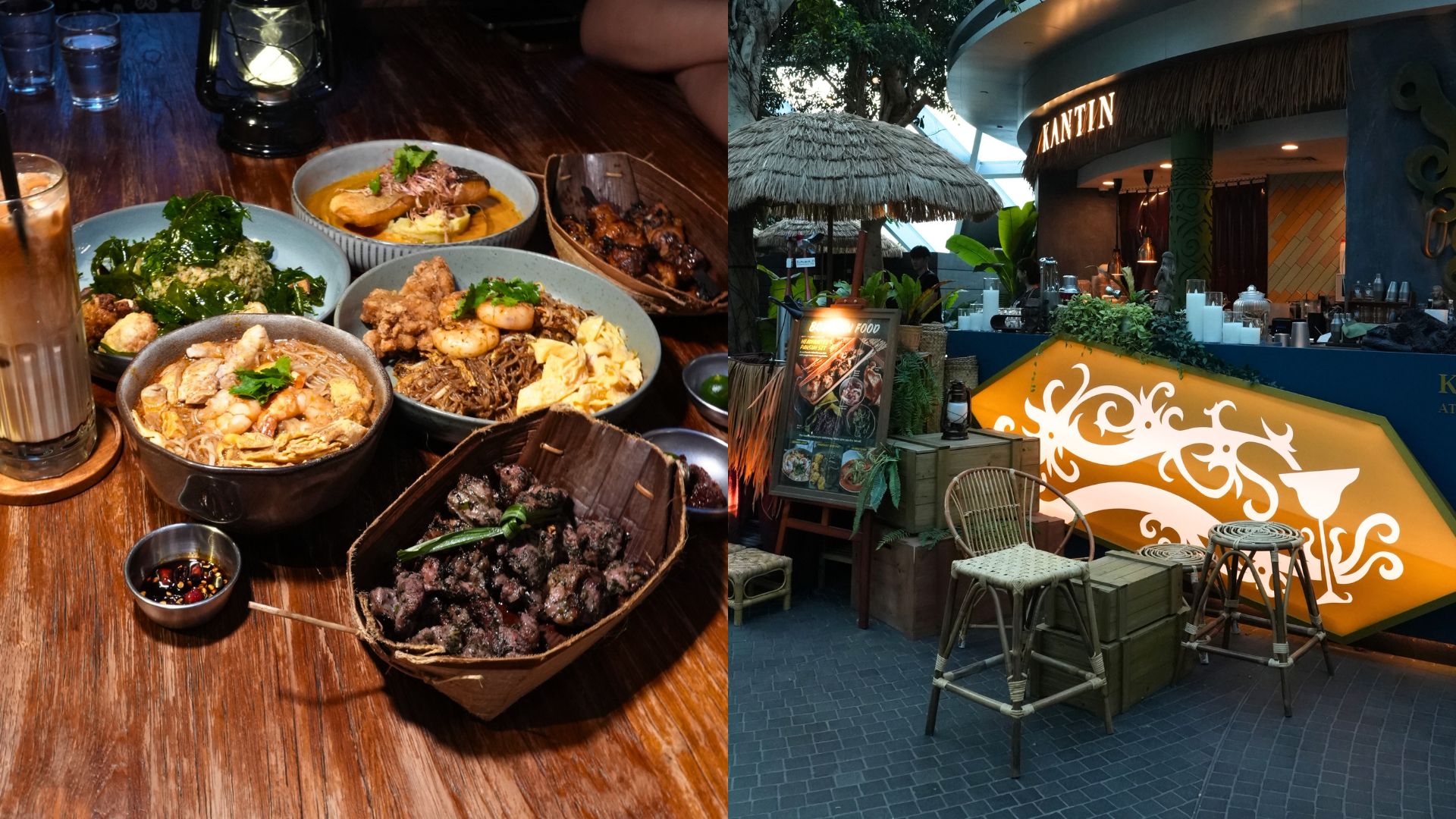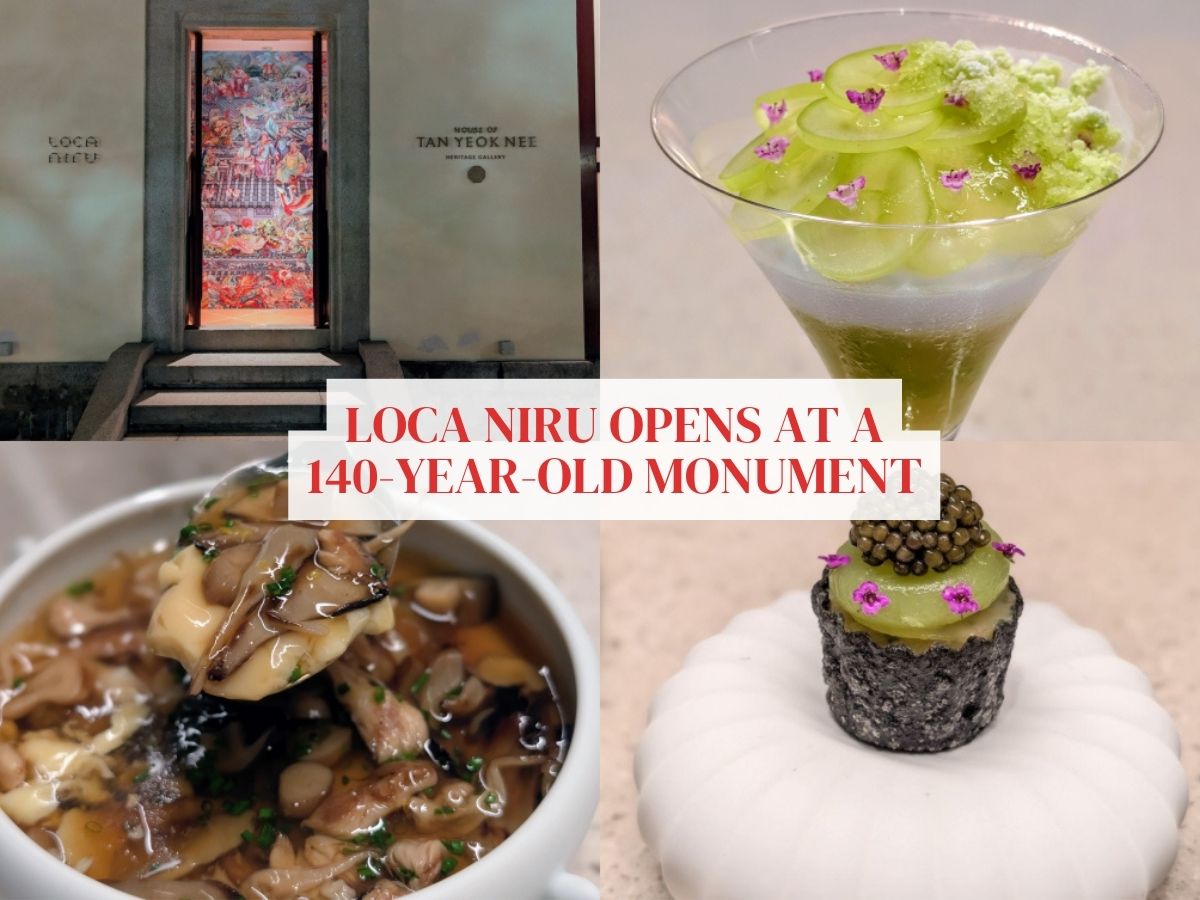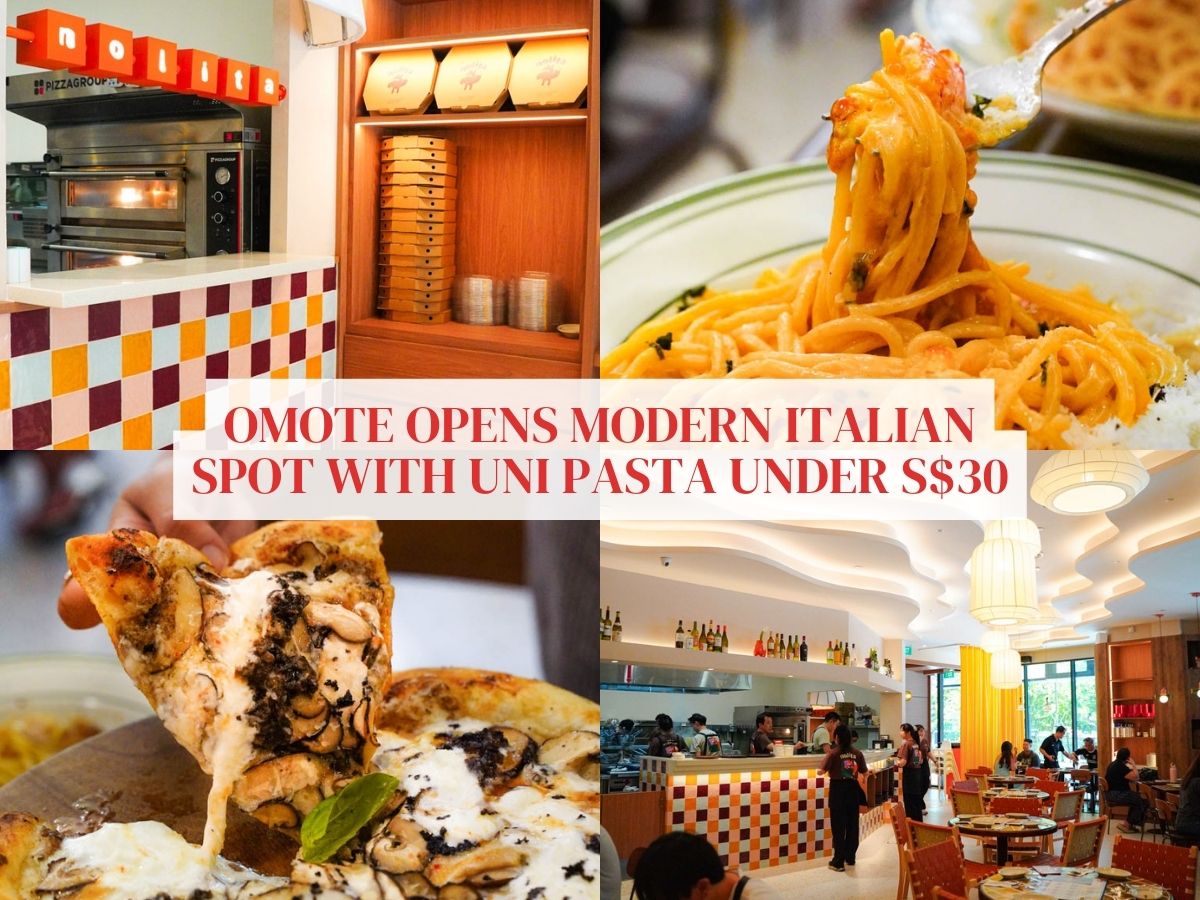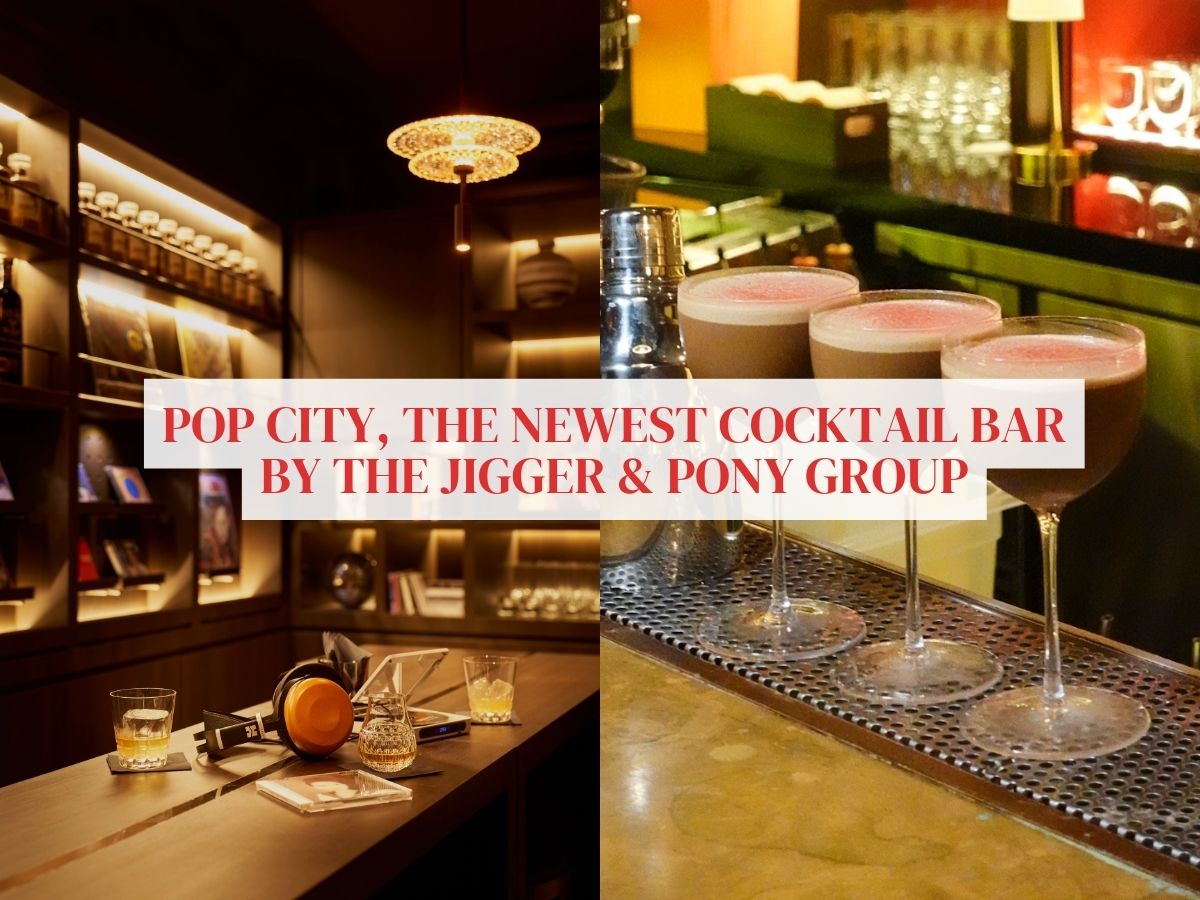Kantin at Jewel Changi: Try authentic Borneo fare at Singapore’s only Bornean restaurant
- Kantin Singapore is the local offshoot of the Bornean F&B concept which first launched in Kuching, Sarawak in 2021.
- Located at Jewel Changi, it not only serves up authentic dishes from Borneo, but also incorporates strong storytelling in its decor and menu.
- It also has unique beginnings, started by a creative agency.
- Dishes we loved included the Sarawak laksa, and its signature Headhunter pansuh set.
Located on the top floor of Jewel Changi‘s iconic glass dome, Kantin offers something truly new to Singapore’s dining scene: An authentic dive into the world of Bornean “jungle food”.
Drawing from the traditions of over 300 indigenous headhunter tribes across the island, Kantin is no typical Southeast Asian restaurant — it is a culinary gateway into one of the world’s oldest rainforests.
What stands out instantly on our visit there is the way Kantin weaves the deep respect for Bornean cuisine, and its traditions into a contemporary, elevated dining experience.
From age-old fermentation methods and bamboo slow-cooking, to flame-grilling with wild aromatic herbs, each technique is drawn straight from tribal practices passed down through generations.
The result is a dining experience that feels both deeply traditional and refreshingly original.
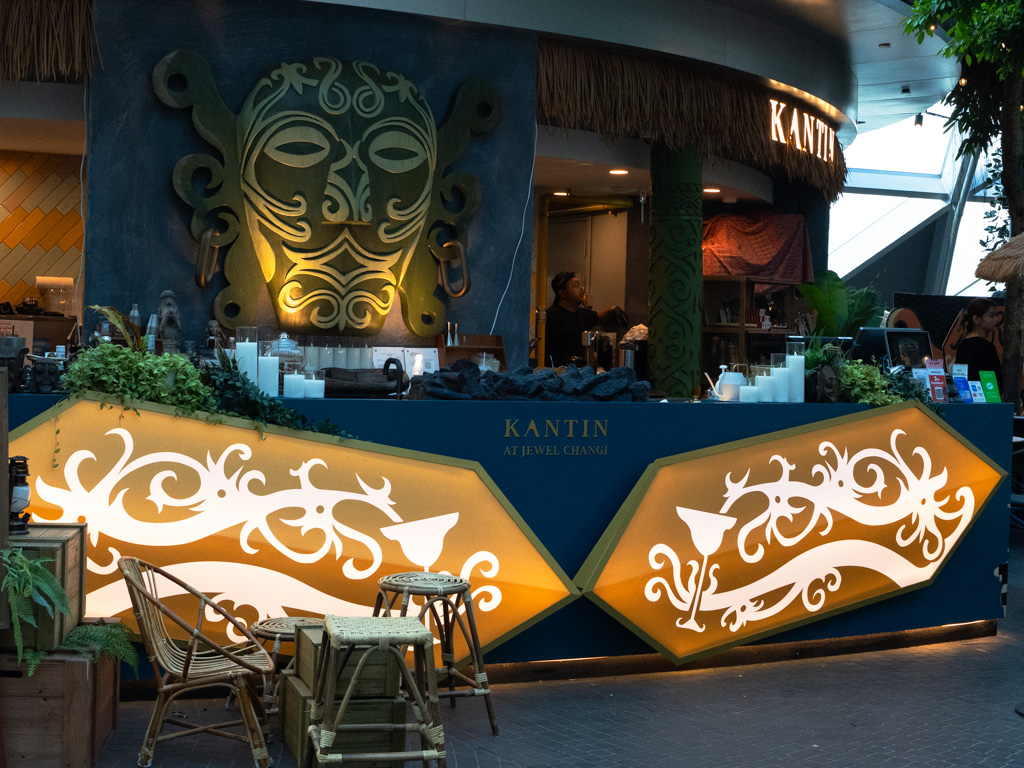
While you may not have heard of this unique restaurant, which has been open at Jewel Changi’s topmost floor since 2023, its concept has not gone unnoticed.
Kantin at Jewel Changi was recently nominated for Asia’s Best New Restaurant 2025 at the World Culinary Awards — one of only two Singapore establishments to receive this recognition, with the other being Nomada, a Spanish restaurant at Keong Saik.
Even if you haven’t tried the fare, its nomination bears testament to the way authentic cultural storytelling through food resonates, not just here, but across the region and beyond.
Kantin’s story

Kantin’s origin story is anything but conventional — it was spearheaded by a creative agency known as Sarawak Eye.
Founder Carmen Toh, who had spent a decade in media and journalism, had assembled a team of artists and creatives — none with formal F&B experience — to launch the concept first in Kuching, in 2021.
Her philosophy? Hire for cultural authenticity and storytelling over restaurant credentials.
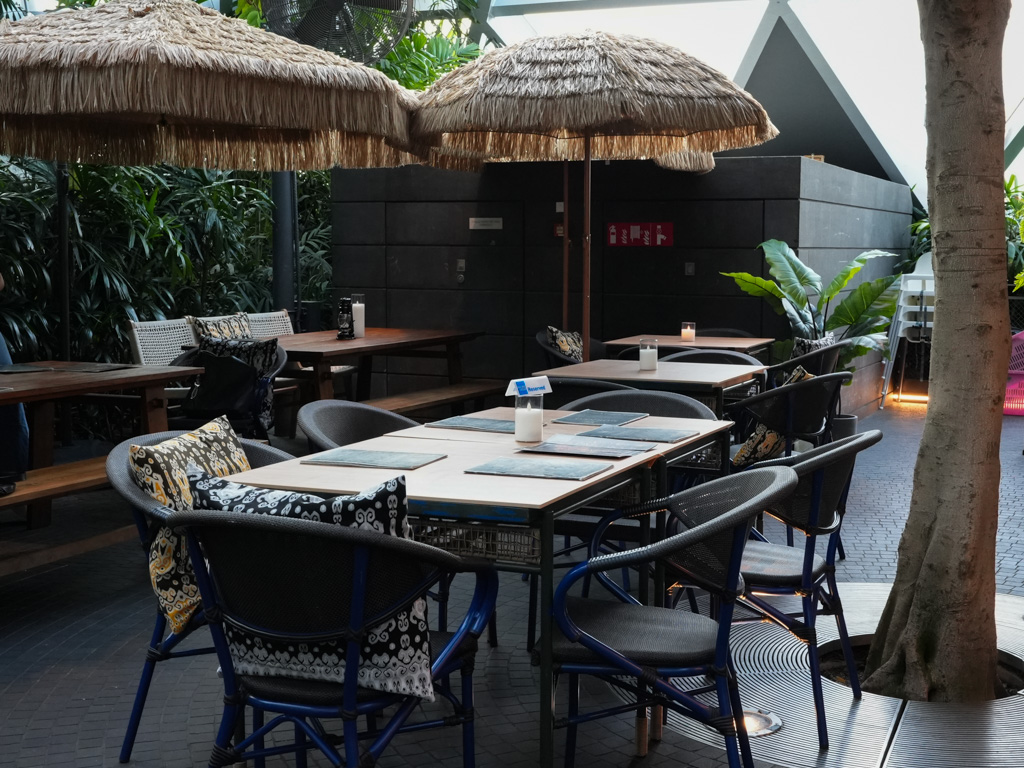
That ethos shaped every detail from menu development, to interior design, creating a team that operates more like cultural custodians, than conventional restaurateurs.
Carmen works closely with chefs, artisans, and mixologists to translate indigenous traditions into dishes with narratives.
“Every dish, every detail on the menu is meant to bring a piece of the rainforest to life,” she says. “It’s our living tribute to a way of life that has thrived in harmony with nature for generations.”

Co-founder Emily Yii draws from her film background and early hospitality experience in Melbourne. While she leads PR and marketing, she’s equally involved in the kitchen — overseeing R&D and menu curation to balance creativity with cultural preservation.
Then there’s co-founder Lionel Benang Chai, who grew up in a traditional longhouse in Kapit. He brings that indigenous Iban heritage directly into the restaurant’s operations, such as co-developing the Singapore-exclusive cocktails that spotlight Bornean liquors and ingredients.
Together, the trio have built more than just a restaurant — they have created a living, breathing expression of Sarawak’s heritage, told through every plate and pour, in both Singapore and Kuching.
Its space at Jewel Changi
Step into Kantin and you’re instantly transported. The space channels the soul of a Bornean longhouse — warm, earthy, and tactile. Vibrant tribal motifs wrap around the space, reimagined with sleek, modern touches.

You feel this most when facing the towering headhunter mask sculpture at the front-centre of the restaurant — a striking tribute to indigenous heritage that commands attention, while remaining deeply respectful.
From Sarawakian rattan and wooden furnishings, to ceiling-stretching straw umbrellas, every detail in its decor evokes Borneo’s primal energy.
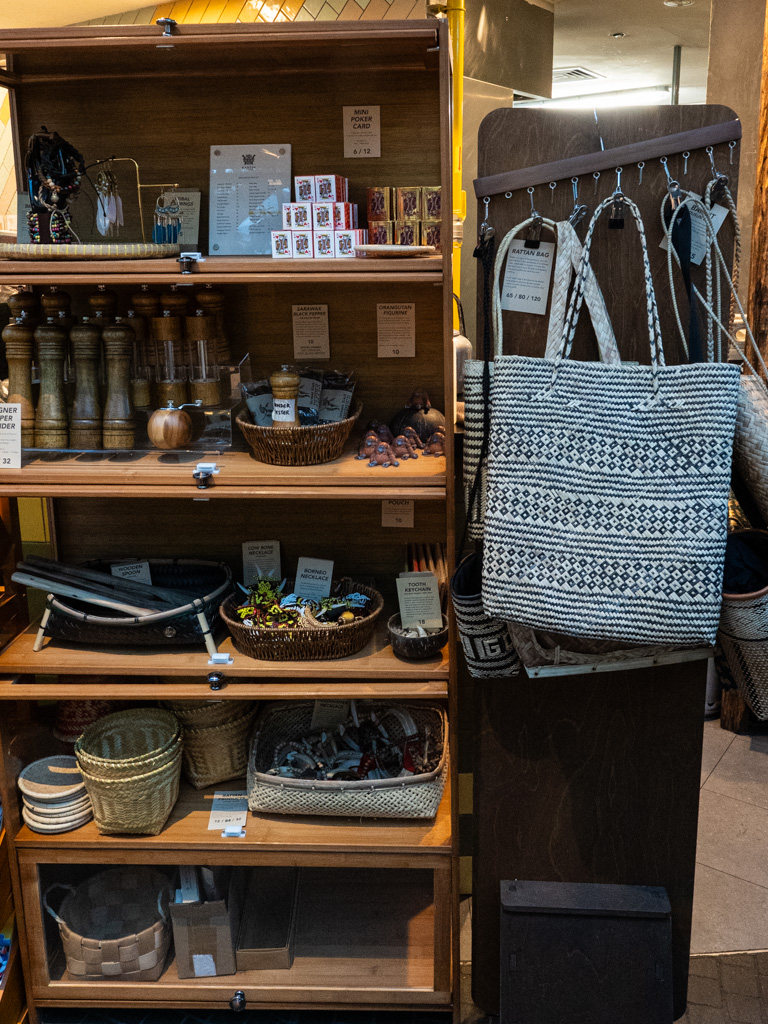
What truly impresses are the smaller, curated elements: Handmade fabrics, cow-bone necklaces inspired by native warriors, and vivid Selampai scarves traditionally worn by Sarawakian women.
These aren’t just decorations for the sake of it, but cultural elements thoughtfully placed to transform the experience.
Kantin Singapore’s menu
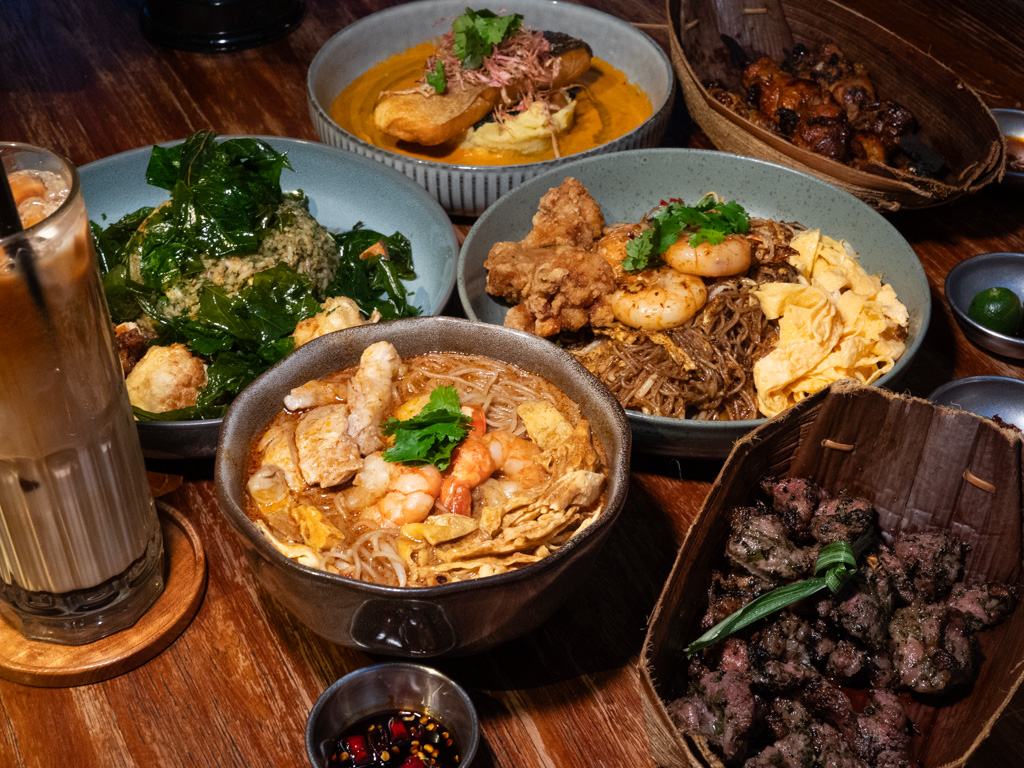
At Kantin, food is storytelling.
Each dish is designed as a narrative — revealing stories, techniques, and wild flavours of Borneo’s indigenous heritage.
You’ll do well to start with the Headhunter pansuh set (S$32) — a compelling introduction to Dayak cuisine.

Chicken is slow-cooked in an aromatic broth, traditionally prepared in bamboo over fire.
It arrives tender, earthy, and infused with jungle herbs, served with purple rice wrapped in banana leaf. The dish is a nod to the Bario Highlands, home to the Kelabit people.
It is served with a rotating trio of Dayak sides, which changes depending on what’s available.
On our visit, we had the:
• Pusu bawang, deep-fried anchovies tossed with pickled onion
• Umai jellyfish, crunchy strips of jellyfish, dressed in a traditional Melanau citrus-chilli sauce
• Keropok lekor, classic fish crackers
Each dish added a distinct texture and flavour dimension. The jellyfish, in particular, was a highlight — refreshing, tangy, and soft, it was a beautiful contrast against the mellow richness of the chicken.

The Sarawak laksa (S$24) is another show-stopper and personal favourite. It is said to have been described by the late Anthony Bourdain, as the “breakfast of the gods” — a telling indication of its intense flavours.
The broth is a heady blend of over 30 spices — creamy, complex, and laced with coconut milk. Poached chicken, succulent prawns, and silky egg ribbons soak up that spiced richness.
All it takes is one spoonful and you understand the reverence.
If you’re someone who prefers dry noodles, the superdry laksa (S$19) is its wok-fried cousin, capturing all that laksa intensity with an irresistible wok hei char.
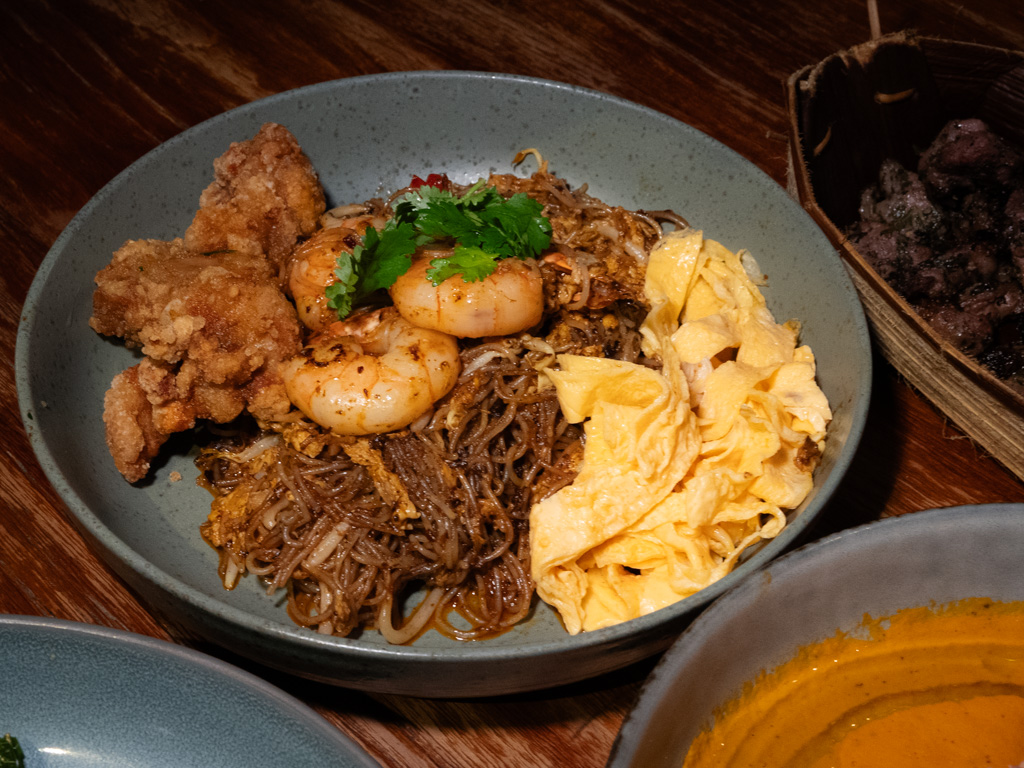
For a vegetarian pick, go for the Rainforest fried rice (S$18). It is stir-fried with native herbs such as torch ginger flower and tapioca leaves, and is deeply aromatic.
It comes with crispy cauliflower nuggets and shiitake mushrooms that round out the umami.

If you’re in for more proteins, the Borneo smokehouse menu celebrates Sarawak’s flame-kissed flavours. Try the gula apong chicken satay (S$16) that’s grilled over open flame until perfectly charred.
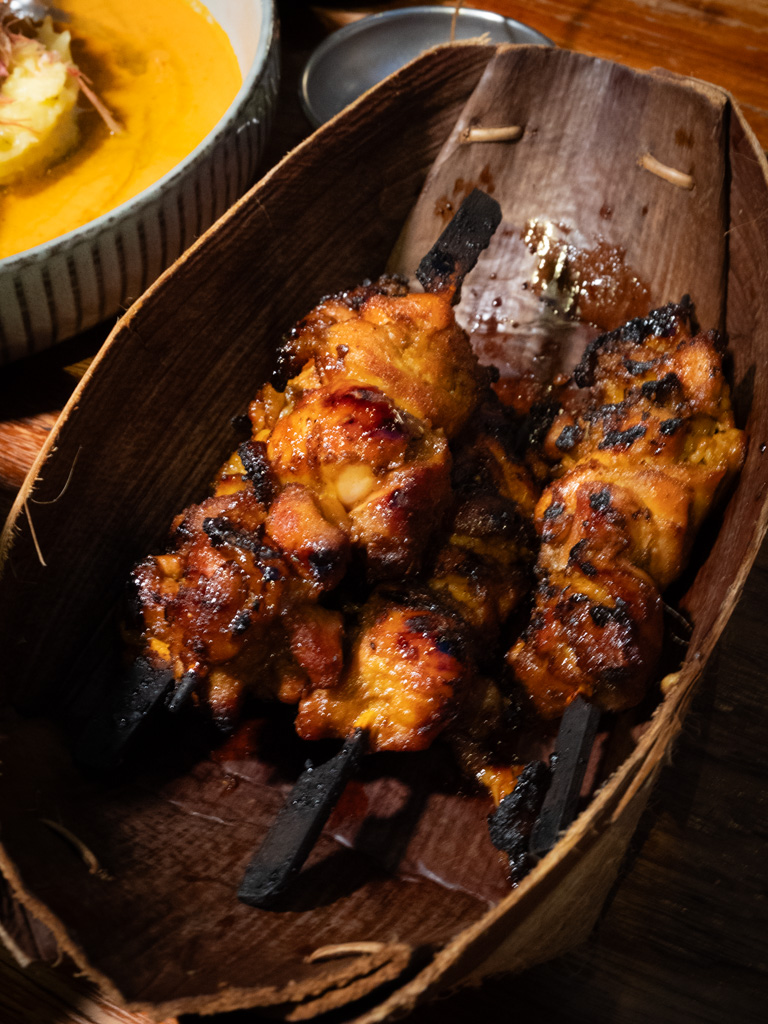
The chicken is juicy, succulent, and caramelised with a sticky glaze of gula apong (Borneo’s prized palm sugar).
By comparison with regular coconut sugar, it is slightly tart, deeply smoky, and rich with toffee-like complexity. Each bite delivers smoke, sweetness, and spice — balanced so well I found myself craving another skewer before finishing the first.
Another strong contender from this menu is the kambing asap (S$18) — juicy grilled lamb cubes infused with just the right amount of smoke. It is robust, not too gamey, and charred on the edges. All in a very flavour-packed mouthful that I’d gamely go back for more.
The desserts
In line with its flavourful mains, Kantin’s desserts are fruit-forward, tropical treats.
The cempedak ice-cream (S$10) pairs creamy vanilla with rich cempedak sauce — a funny, fragrant cross between durian and mango, topped with savoury crumble for texture.
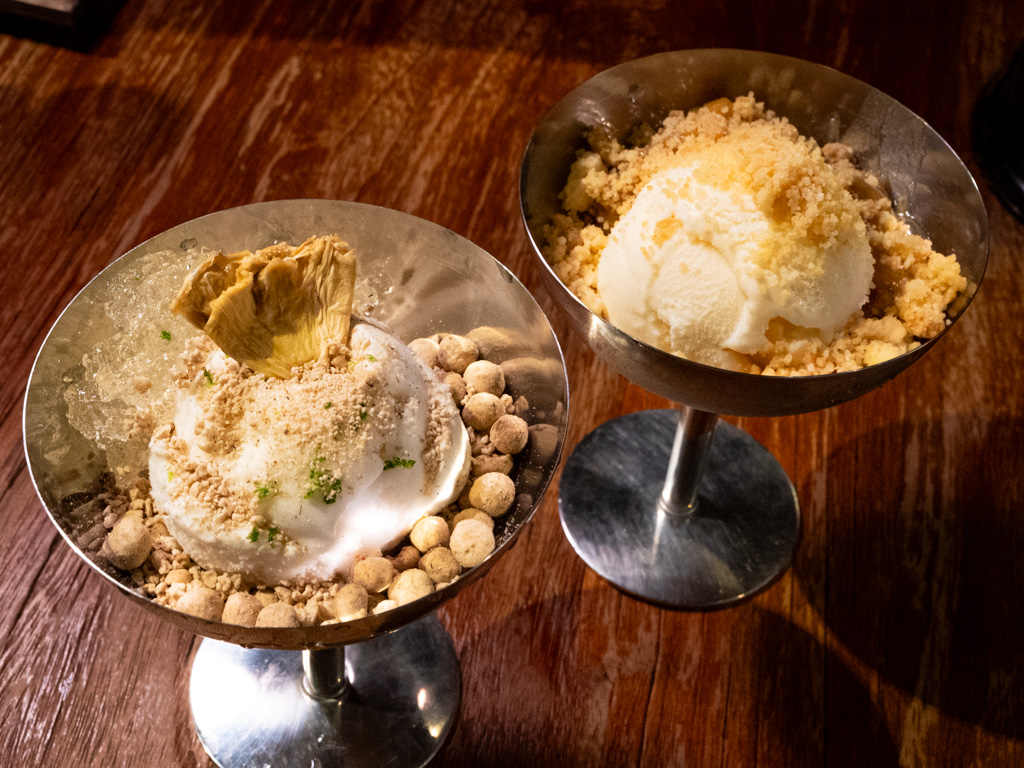
The coconut Dream (S$10) is a tropical vacation in a cup: Coconut ice-cream layered with calamansi jelly and Mukah sago (a Melanau staple), finished with lime zest and a dehydrated pineapple.
It is a light sweet treat, with just enough tart as a welcome palate cleanser after all that jungle spice.
The drinks
We were at Kantin for dinner, but were told we had to try the Sarawak teh C special (S$10), and so we succumbed.
It is essentially a three-layered iced tea with creamy milk and gula apong syrup. The drink is smooth and sweet, with that trademark hint of palm sugar tang that sets it apart from your typical teh tarik.
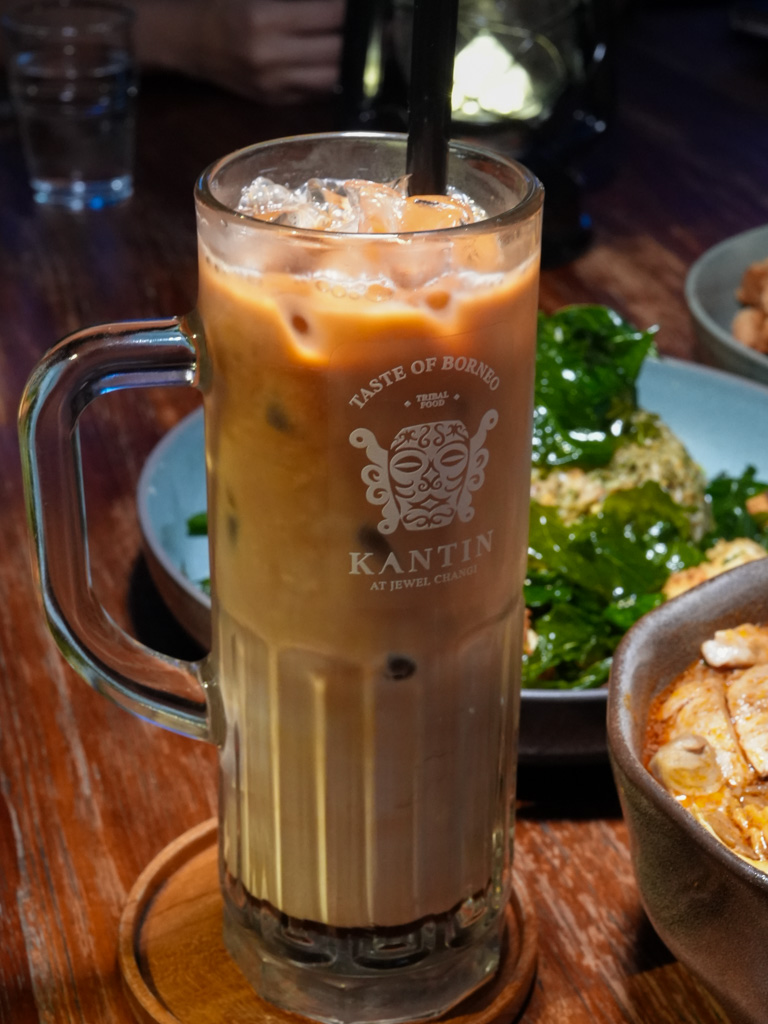
It’s so good, I wish it was a variation that was more readily available.
If you’re in the mood for something boozy, the cocktails here are definitely worth the try. Kantin Singapore’s cocktails are extensions of the menu’s wild, botanical identity — and its flavours are also Singapore-exclusives.
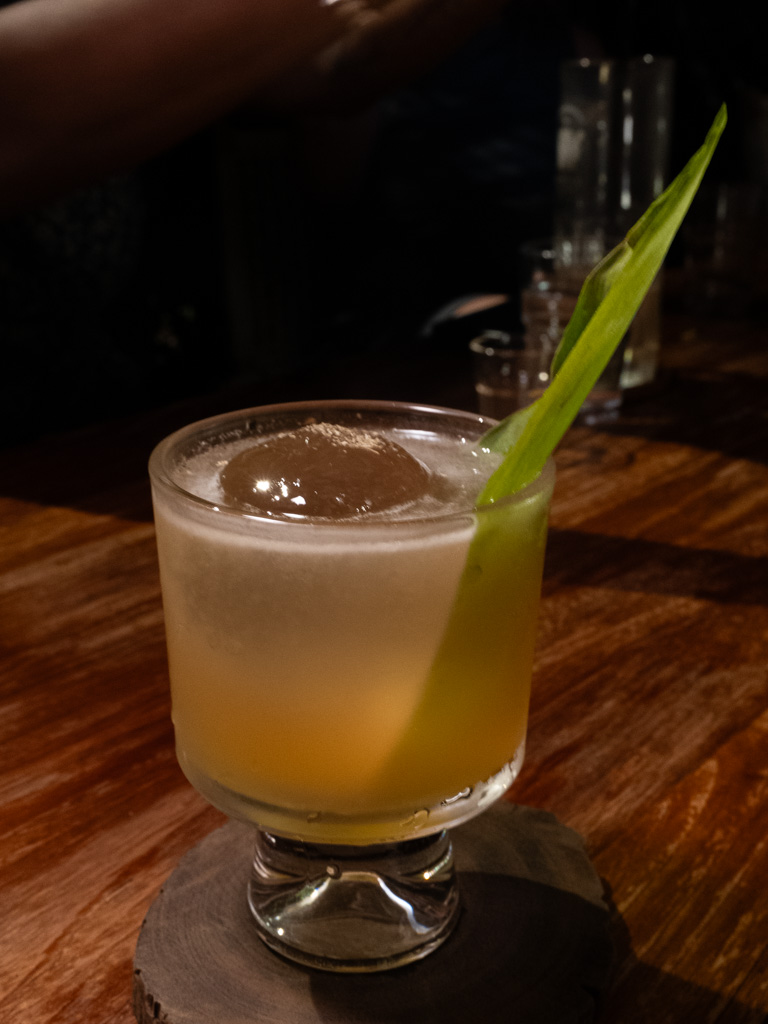
Borneo Elixir (S$24) is essentially a rum negroni that is well-balanced, with deep, herbaceous notes and a slightly bitter finish. It is described as “wild and mature,” and honestly, that’s pretty accurate.
Another cocktail we tried, the Cloud Forest (S$24) is crafted with rum and tuak, a fermented rice wine from the Dayak tribe. (We also got introduced to the tradition of tuak shots by the team, and we have a feeling you might experience that, too, if you find yourself at the restaurant.)
The drink is mellow and fragrant. It is earthy, slightly sweet, and layered — all in, a cocktail with soft botanical notes that seems heavy, but is actually easy to drink.
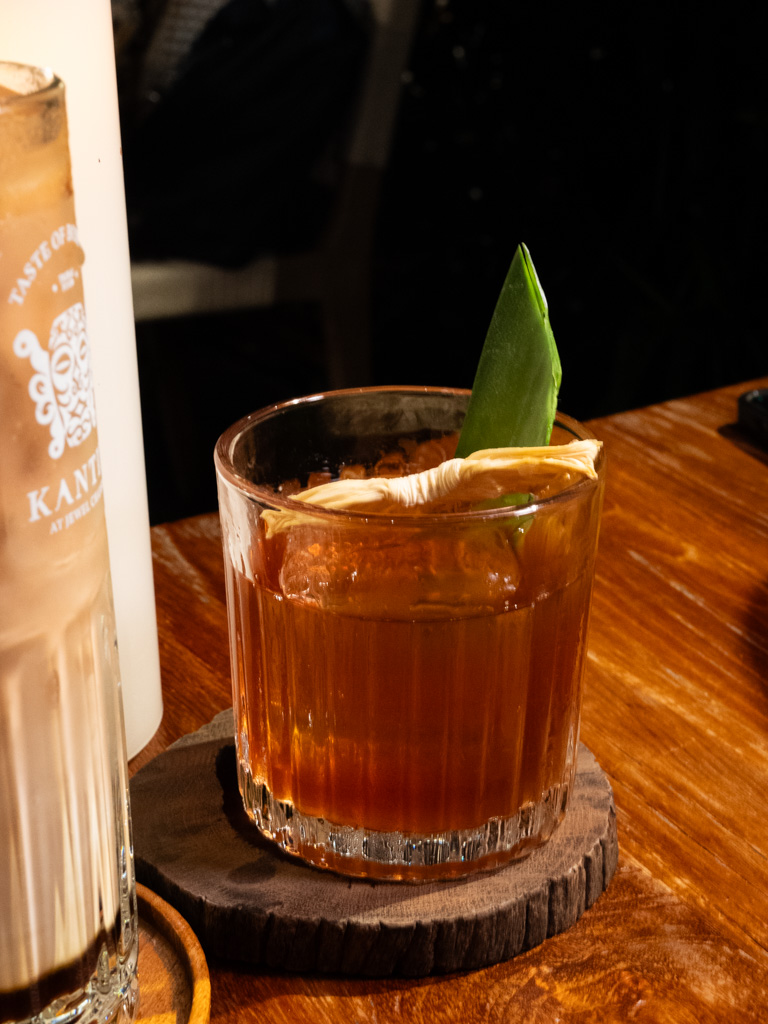
Having gone through the whole experience at Kantin Jewel Changi, it’s clear that every plate, artefact, and pour pulls you deeper into Borneo’s rich, ancestral world.
It doesn’t just want to serve food, but a fully immersive story.
Whether you’re here for the spice-laden laksa, the smoky satay, or simply to bask in the glow of a culture often overlooked in Singapore’s dining scene, Kantin Singapore makes sure you leave with a memory, until you get to visit Borneo yourself, that is.
This was a hosted tasting.
In Jewel Changi? Check out Cafe Kitsune, which just opened its second outlet there, or explore our food guide for more F&B choices around Jewel Changi.
Tues 11am - 10pm
Wed 11am - 10pm
Thurs 11am - 10pm
Fri 11am - 10pm
Sat 11am - 10pm
Sun 11am - 10pm
- Changi Airport
